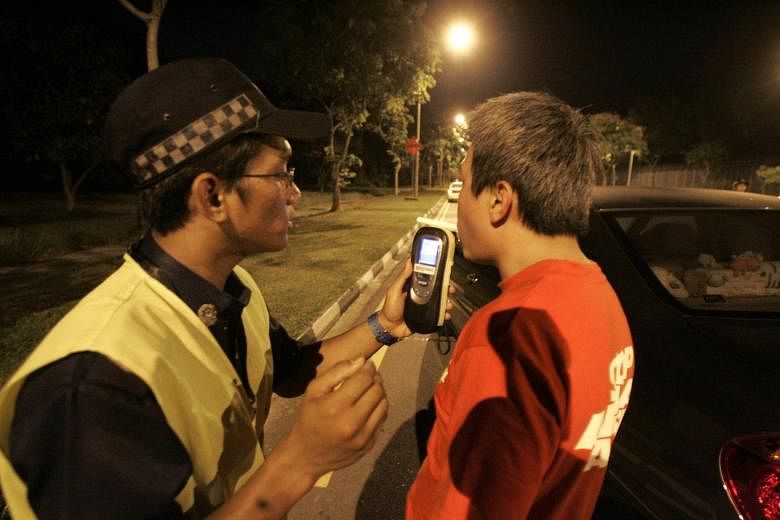Drink drivers who injure someone or damage property should expect to serve time in jail, save in an exceptional category of cases.
Just how much time will depend on the severity of injury, how much alcohol the driver had consumed and how dangerously he was driving, Chief Justice Sundaresh Menon said yesterday, as he laid down a new sentencing framework for drink driving.
Highlighting the need for deterrence, he pointed out how the number of people imprisoned for drink driving had risen. It more than tripled from around 50 in 2014 to nearly 190 last year.
The Chief Justice stressed that the very purpose of criminalising drink driving is to prevent harm to others. "Drunk driving has many potential consequences - such as disruption of traffic, fear and alarm to pedestrians and other drivers, damage to public and private property, and detriment to the drunk driver's own well-being - but at the very pinnacle of the potential harm is physical injury or death of those who are put in harm's way by the drunk driver's conduct," explained CJ Menon.
"It therefore stands to reason that when such harm is in fact caused, the sentence imposed should tend towards the higher region of the sentencing range..."
He split the degrees of harm into slight, which involves injuries that do not require hospitalisation or medical leave; moderate; serious; or very serious, which includes loss of limb, sight or life.
He also categorised culpability into low, medium and high.
While a drink driver may escape a jail term for a case involving slight injury and low culpability, every other combination would cross the custodial threshold, said CJ Menon, who spelt out four bands of punishments for first offenders.
For instance, the starting sentence for cases of very serious harm and high culpability will be between four and six months in jail. And for cases of serious harm and high culpability or of very serious harm and medium culpability, it will be between two and four months in jail. Meanwhile, cases involving moderate harm and high culpability, or serious harm and medium culpability, will attract jail terms of up to two months. For cases involving other combinations of degrees of harm and culpability, it will be up to a month in jail.
CJ Menon also made it clear that the courts will give little consideration to claims from the accused to cut their jail terms because of the adverse impact it could have on their careers, or because of their contributions to society.
He set the guidelines in the appeal of a 35-year-old Singapore Armed Forces (SAF) major who, after drinking three beers, ran a red light on Jan 29 last year. A pedestrian suffered an injury on her right foot, while a motorcyclist who was hit suffered amnesia and was warded for three days.
Stansilas Fabian Kester had initially been given two weeks in jail and a three-year driving ban but argued the sentence would cost him his SAF career, and urged the court to take into account his service.
Classifying Kester's case as one of moderate harm and medium culpability, with a starting sentence of two weeks in jail, CJ Menon said the consequences he will face in his employment were not relevant in mitigation. "A person who breaches the criminal law can expect to face the consequences that follow under the criminal law," he wrote.
But he cut the jail term to a week as Kester had paid more than $41,000 in compensation to both victims, showing he was " sincerely attempting to make it up to the victims". The driving ban remains.
SEE TOP OF THE NEWS


